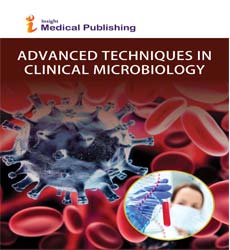Prevalence of Drug Resistance Bacteria in Primary, Secondary and Tertiary Healthcare Level in Bangladesh
Abstract
Antibiotic resistance is increasing day by day. The antibiotic resistance profile of Gram positive and Gram negative organisms shows different multidrug resistance as like Ampc+ve, ESBL+ve in different age & sex groups. The present study aimed to ascertain current situation of antimicrobial resistance in Primary, Secondary and Tertiary level Hospital. Objectives: To estimate the antibiotic resistance among the organisms isolated from patients in different age & sex groups attending at selective primary, secondary & tertiary level health care. A total of 150 samples were subjected to bacteriologic culture in the department of Microbiology, BIHS General Hospital, Mirpur, Dhaka, during the period of 1st May 2018 to 30th April 2019. Specimens were collected from hospitalized and outdoor patients of different age and sex groups. All urine specimens were examined by routine microscopy to find out significant pyuria. All isolates were identified by standard microbiological technique and their antibiotic susceptibility was observed by disk diffusion method. Strict aseptic precautions were taken all through the culture system. Out of 150 specimens, 88 culture yielded significant growth of E. coli, Klebsiella sp., Staphylococcus Spp. Pseudomonas spp. Streptococcus spp, Enterococcus sp., Enterobacter Spp. Citrobacter sp., Proteus Spp. Acinetobacter sp. The resistance was shown in the form of Ampc+ve 30(41.1%), ESBL+ve 8 (11.0%) and both of AmpC+ve & ESBL+ve 8(11.0%), both of Carbapenemase & AmpC+ve 13(17.8%). MRSA 8 (72.7%), MRSS01 (9.1%) and VRE 2(18.2%) of different Gram positive & Gram negative organisms. In primary Health Care Level (UHC), MRSA, VRSA and VRE were not found, but one MRSS was found. In secondary health Care level (FGH),VRSA and MRSS was not found .But, 3(37.5%) MRSA and one (50%) VRE was found. In tertiary level, VRSA and MRSS was not found, but 5(62.5%) MRSA and one VRE (50%) were found. All(100%) of Gram negative bacilli was Multidrug Resistant(MDR) in primary health care level, 20(76.9%) in secondary and 8(50%) in tertiary health care level. Organisms isolated in primary health care level showed highest multidrug resistance, lowest in tertiary and in between in secondary health care level. Antibiotics should be used after doing proper laboratory procedure and should be selected on the basis of antimicrobial sensitivity test for proper treatment and to minimize emergence of drug resistance.
Open Access Journals
- Aquaculture & Veterinary Science
- Chemistry & Chemical Sciences
- Clinical Sciences
- Engineering
- General Science
- Genetics & Molecular Biology
- Health Care & Nursing
- Immunology & Microbiology
- Materials Science
- Mathematics & Physics
- Medical Sciences
- Neurology & Psychiatry
- Oncology & Cancer Science
- Pharmaceutical Sciences
